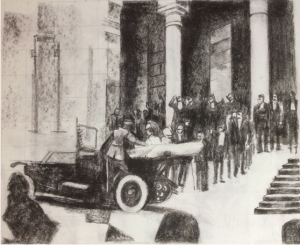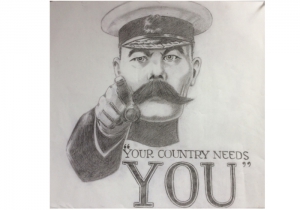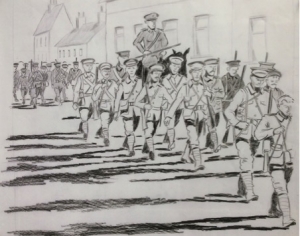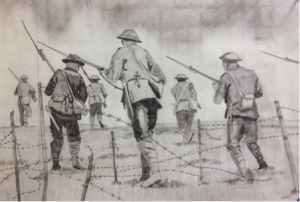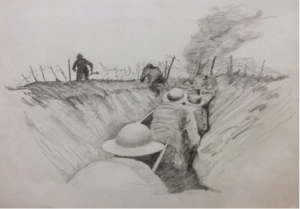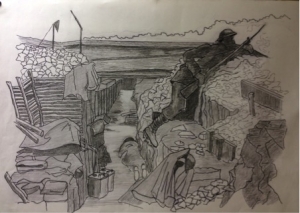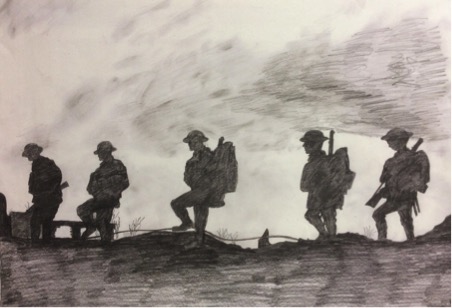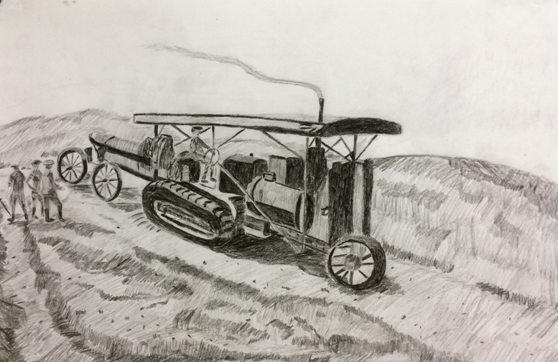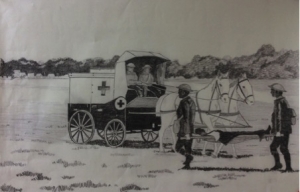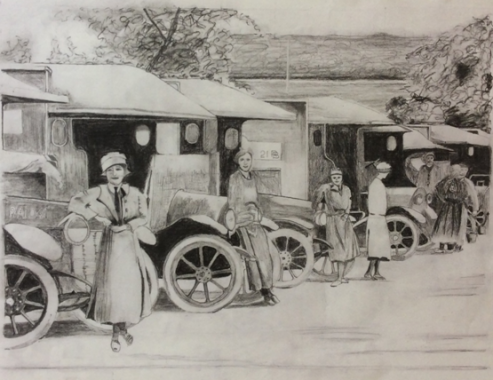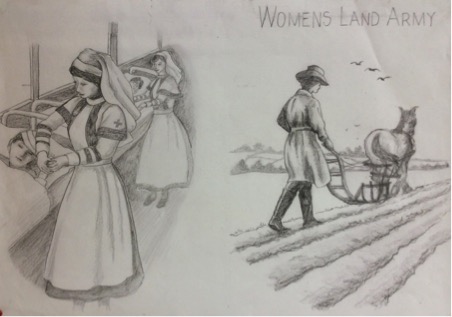Grange Art Group Frieze
Radcliffe on Trent WWI centenary exhibition
The drawing of the assassination of ArchDuke Franz Ferdinand is by Joe Burrows (1929–2022). The other drawings above were executed by Grange Art Group members who were, in alphabetical order, Val Acton, Anna Barratt, Roy Brown, Joan Burditt, Joe Burrows, Hazel Cathcart, Rodney Fogg, Ros Harris, Christine Healy, Jack Hunt, Joy Jordan, Helen Jarvis, Shirley Kurcin, Barbara Lakin, David Marshal, Tom Rowberry, Julie Saywell, Brian Sharp.
Drawings not to be reproduced, © University of the Third Age, Radcliffe on Trent
The exhibition was enhanced with a frieze drawn by the local Grange Art Group. It was displayed in the main exhibition room at the Radcliffe British Legion. Members of the art group described the frieze as follows:
“The frieze, drawn in a pencil media, is intended to illustrate the scope of the war. The first graphic depicts the assassination of Archduke Ferdinand followed by the hopes for a short, victorious war, the trenches and utter battlefield desolation, the development of war in the air and at sea ending with millions dead and finally the erection of the Cenotaph memorial in Whitehall. The frieze depicts men and equipment on land, sea and air; it also shows the extensive role of women in production, forces support, farming and nursing the wounded.”
The frieze was based on photographs, postcards and propaganda posters circulated during the war years. Some of the familiar images in the drawings are derived from the work of official British war photographers Lieutenant Ernest Brooks and Lieutenant John Warwick Brooke who took thousands of photos on the western front. The propaganda poster images reproduced in the drawings were aimed at both men and women, encouraging their involvement. The focus on weapons, ships and planes in the drawings shows that WWI was industrial warfare, fought on a global scale. The cemetery drawing symbolises approximately eleven million military personnel and civilians from around the world who lost their lives as a result of the conflict.

